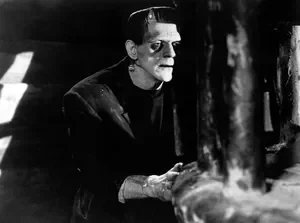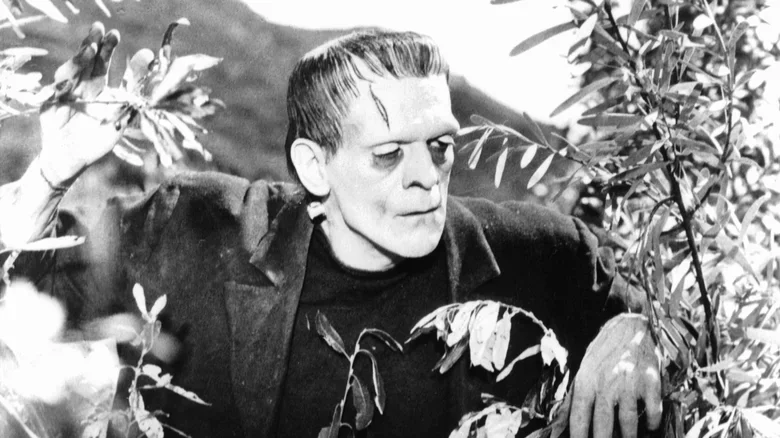Mary Shelley: The Teenage Girl Who Invented Science Fiction
/By Samantha Walt
Hulton Archive/Getty Images
In 1815, an 18-year-old girl sat down to write a ghost story and ended up inventing modern science fiction. You know her, you love her – or at least, you know her creation. Mary Shelley, author of Frankenstein, didn’t just write a monster story. She created a genre and forced readers to confront the moral limits of human ambition. Even if you’ve never opened the book, you know her creature; stitched together, misunderstood and more human than the man who made him.
A life shaped by genius and loss
Mary Shelley was born Aug. 30, 1797, in London, England. Her father, William Godwin, was a philosopher and political writer. Her mother, Mary Wollstonecraft, was a feminist thinker and author of A Vindication of the Rights of Woman. Wollstonecraft died shortly after giving birth, leaving a legacy her daughter would spend her life both inheriting and redefining.
Shelley never received a formal education, but she had access to her father’s vast library and the thinkers who visited his home. Books became her teachers, and writing became her refuge. By her late teens, she had fallen in love with the poet Percy Shelley, who was already married when they eloped. The scandal made her an outcast, but it also hardened her sense of independence.
The ghost story that changed literature
In the summer of 1816, Mary and Percy Shelley travelled to Geneva, where they spent time with Lord Byron and other writers. Stuck indoors by endless rain, Byron proposed a challenge: each guest should write a ghost story. What began as a dare became Frankenstein, the story of a scientist who creates life and must face the horror of what he has done.
Shelley was still a teenager when she began the book. It took her about two years to complete and was published anonymously in 1818. Many readers assumed the author was a man. The fact that it had been written by a young woman shocked Victorian audiences, who called it blasphemous and immoral. Despite the controversy, it sold well. Of 500 printed copies, 459 were sold, and its stage adaptation, Presumption; or, the Fate of Frankenstein, made the story a cultural sensation.
Boris Karloff as the monster in the film Frankenstein, directed by James Whale and released in 1931.
The birth of modern science fiction
Shelley didn’t just write horror; she gave science fiction its conscience. Victor Frankenstein became the prototype for the “mad scientist,” inspiring generations of creators who dared to push the boundaries of knowledge. From Dr. Jekyll and Mr. Hyde to Jurassic Park, every tale of science gone too far owes something to Shelley’s vision.
The novel introduced a moral question that still drives the genre: just because we can, does that mean we should? Shelley warned of the dangers of unchecked ambition long before cloning, artificial intelligence or genetic engineering were imaginable.
Her use of real science made the story even more revolutionary. Shelley drew on contemporary experiments in electricity and anatomy, grounding her fiction in plausible detail. In doing so, she gave the world “speculative realism,” the bridge between Gothic fantasy and modern science fiction.
Archive Photos/Getty Images
A monster with a soul
What makes Frankenstein endure isn’t just its innovation, but its empathy. The creature isn’t born evil; he becomes monstrous because he is abandoned. Shelley’s portrait of a suffering, intelligent being rejected by society created the first “sympathetic monster.” That idea continues to shape stories from King Kong to Edward Scissorhands.
Shelley shifted Gothic fiction away from haunted castles and toward haunted minds. The real horror, she showed, lies not in supernatural threats but in guilt, isolation and the fear of being unloved. Her exploration of alienation and identity helped pave the way for modern psychological and existential horror.
The legacy of a teenage visionary
Two centuries later, Frankenstein remains one of the most influential novels ever written. Its bleak landscapes, moral ambiguity and emotional depth helped define Gothic literature and inspired iconic authors like Edgar Allan Poe and Bram Stoker.
But Shelley’s influence extends beyond literature. Her questions about creation, responsibility and what it means to be human still resonate in today’s debates about technology and ethics. Every time we see a robot search for meaning or a scientist play god, we see the spark Mary Shelley first imagined by candlelight.
Sam at a concert in downtown ottawa
Sam Walt is a writer and editor who loves shaping language and making ideas clear, concise, and engaging. Passionate about communication that connects, Sam enjoys refining complex information into writing that feels accessible and meaningful. Drawn to science fiction, dystopian worlds and genres that challenge imagination and society, her favourite books are The Handmaid’s Tale and Fahrenheit 451. Currently studying Professional Writing at Algonquin College, Sam has developed a strong foundation in editing, style, and document design, as well as a deep appreciation for the power of language across contexts. Outside of school, Sam can often be found thrifting for treasures, catching live music or tending to her growing collection of houseplants. For Sam, good communication, much like good music, is all about rhythm and connection.





